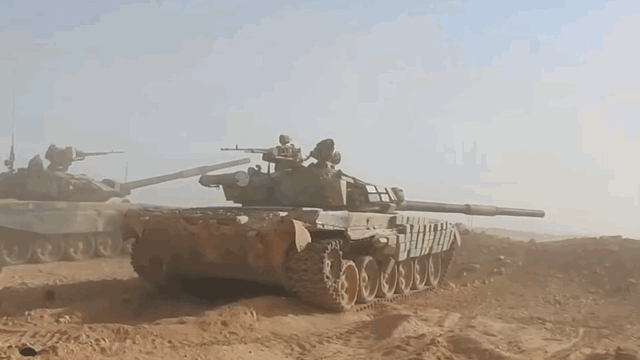Weapons of the Syrian War: Tanks
In April 2011, the appearance of heavy armor indicated that a violent crackdown had become a full-fledged war.
This series examines 10 categories of arms used in the Syrian conflict, a ghastly proving ground for much of what 21st-century militaries and militant groups can bring to war.
First use: April 24, 2011 . Syrian Army troops drove tanks into dissenting neighborhoods in the southern city of Dara’a, killing about 25 on the first day. By this time, unrest had spread to about 20 cities in Syria, and the appearance of heavy armor indicated that a violent crackdown had become a full-fledged war.

Common models: Russian-delivered T-72B main battle tank (above, in Raqqa province, June 2016), along with a number of older T-62 and T-55s.
While the Center for Strategic and International Studies estimated Syria had as many as 5,000 tanks in the first decade of the 21st century, "The actual number of tanks operated by Syria at the start of this decade lays closer to 2500, divided between around 1200 T-55s, 500 T-62s and 700 T-72s," the open-source intelligence investigators at Bellingcat wrote in November 2014. "Not all 2500 tanks were active at the same time, with large portions of the T-55 and T-62 fleet in reserve and stored. Of these 2500 tanks, over 1000 have been lost over the course of the Civil War."
After the first successful armed uprising in June, Syrian government forces began sending helicopter gunships along with the tanks. The operations scattered Syrians—as many as 10,000 fled north to Turkey during one early mission—and sent a clear message of turf dominance.
Another reason for tanks: As the resistance gained steam, so did the use of improvised roadblocks: the placement of trucks or buses or earth across roads to slow an enemy trying to get around in non-tracked vehicles. Between 2012 and 2013, the number of roadblocks in the city of Aleppo alone skyrocketed from around 200 past 1,100. Syrian and allied troops could remove only 200 in that time.
Pushback: Rebels and fighters from the Islamic State have posted dozens of videos purporting to show their brutal destruction of Syrian tanks. Some of these were achieved through anti-tank and anti-aircraft weapons ; others by slipping a grenade through the turret, igniting the ammunition and incinerating the crew.
Overview | Small Arms | Tanks | Artillery | Airpower (Syrian) | Anti‑Aircraft Weapons | Barrel Bombs | Chemical Weapons | Airpower (Non‑Syrian) | Cruise Missiles | Suicide Bombers | Advisors
NEXT STORY: Weapons of the Syrian War: Artillery